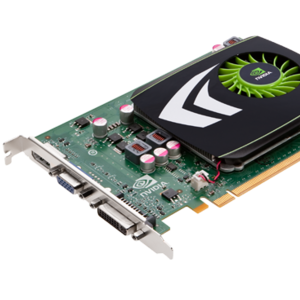Graphics Cards
This is the component that decodes and sends the signal to you monitor.
A good card will make sure that images are displayed quickly and changes are applied without a visable time delay. Most new computers will have cards suitable for digital imaging, and you do not need to spend large sums on graphics cards.
There are two ways of having a graphics card on a computer, built in to the motherboard and as a separate card added to the computer. On board cards use memory taken from the main computer memory, whilst add on cards come with their own. Assigning 64mb of ram to a graphics card should be enough for digital imaging on computer.
If you intend using Adobe Photoshop and / or Lightroom it is worth looking at the recommendations posted on the Adobe web site.
There are a number of commonly used ports on graphics cards and you need the right cables to connect your card to your monitor.
The possibilities include:
VGA (Video Graphics Array), DVI (Digital Visual Interface), HDMI (High Definition Media Interface), Display Port, and numerous Apple ports many of which are now legacy.
There are also sub versions of most of the above including 'mini' versions.
Different ports and cables support varying maximum monitor resolutions.
https://en.wikipedia.org/wiki/Video_card for more information.

